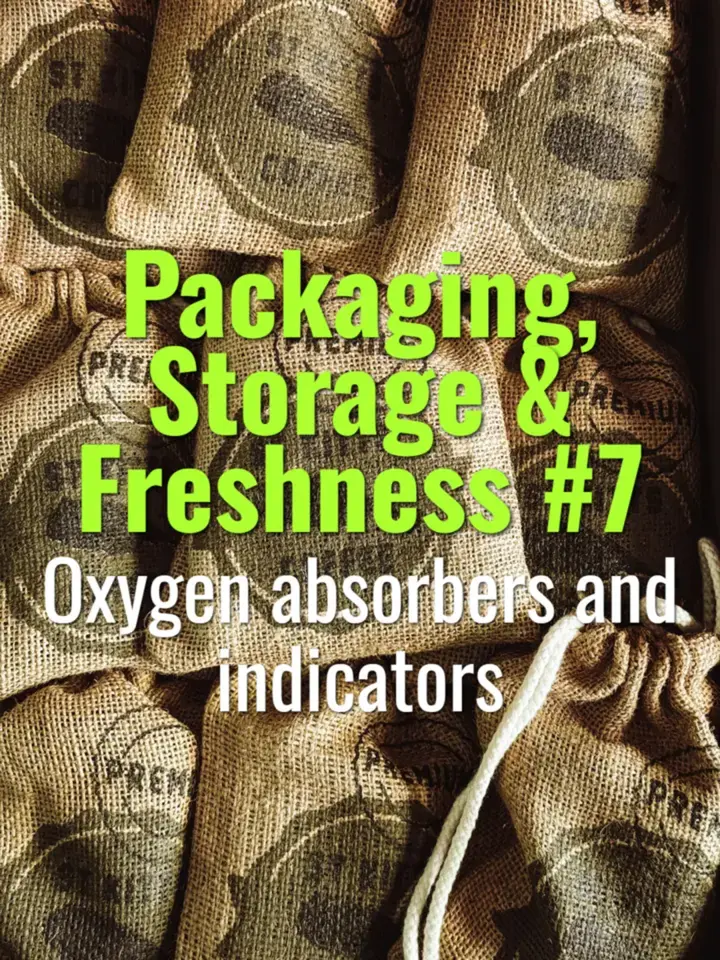Oxygen absorbers and indicators
How oxygen absorbers and indicators are used in coffee packaging to extend shelf life and provide quality assurance.
- Coffee Basics Nerds
- 1 min read
Article 7 of 12 in Packaging, Storage & Freshness/

Oxygen Absorbers
- Small packets containing iron powder or other reactive compounds.
- React with residual oxygen inside sealed packaging, reducing O₂ levels to near zero.
- Prevent oxidation of coffee oils and aromas.
- Extend shelf life when combined with valve-sealed or nitrogen-flushed bags.
- Commonly used in long-term storage or specialty pre-ground packaging.
Benefits of Absorbers
- Protect against staling and rancidity.
- Reduce microbial growth risk.
- Especially useful for single-serve pods and instant coffee packaging.
Oxygen Indicators
- Color-changing labels or inserts that signal presence/absence of oxygen.
- Provide visual confirmation that packaging remains airtight and absorbers are functioning.
- Example: pink = oxygen present, blue = oxygen-free (varies by product type).
Practical Applications
- Specialty roasters may include absorbers for extended shelf-life products.
- Indicators are valuable in export and retail settings, assuring buyers of freshness.
- Work best when combined with multi-layer barrier bags and one-way valves.
Limitations
- Absorbers are single-use; once packaging is opened, they lose effectiveness.
- Not a substitute for proper roasting-to-consumption timelines.
- Indicators show package integrity but don’t guarantee flavor quality if coffee is old.
Summary
Oxygen absorbers actively remove residual O₂ from coffee packaging, while oxygen indicators provide visible assurance of package integrity. Together, they offer an extra layer of protection and confidence, extending shelf life and maintaining coffee quality in distribution and storage.